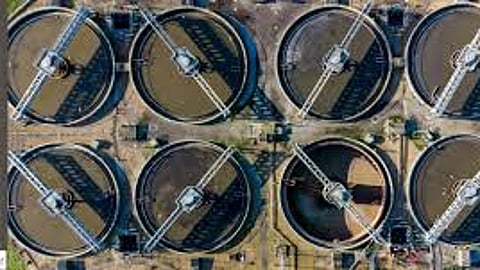Understanding the Concept of IoT in Wastewater Treatment and Management
In the quest for sustainability, industries are increasingly turning to innovative solutions to manage resources efficiently. One such innovation, the Internet of Things (IoT), is poised to revolutionise wastewater treatment and management. By integrating IoT technologies into wastewater systems, industries can optimise operations, enhance environmental stewardship, and ensure the responsible use of water resources. In this blog post, we'll delve into the concept of IoT in wastewater treatment and management, exploring its applications, benefits, and potential challenges.
Understanding IoT in Wastewater Treatment:
At its core, IoT involves the interconnection of devices, sensors, and systems through the internet, enabling the exchange of data and facilitating intelligent decision-making. In the context of wastewater treatment, IoT encompasses the deployment of sensors and monitoring devices throughout the treatment process to gather real-time data on various parameters such as flow rates, pH levels, dissolved oxygen, and pollutant concentrations.
Applications of IoT in Wastewater Management:
1. Remote Monitoring and Control: IoT-enabled sensors installed in wastewater treatment plants allow operators to remotely monitor critical parameters and adjust treatment processes in real-time. This capability enhances operational efficiency and reduces the need for manual intervention, leading to cost savings and improved reliability.
2. Predictive Maintenance: By analyzing data collected from sensors, IoT systems can predict equipment failures and maintenance needs before they occur. Proactive maintenance not only minimises downtime but also extends the lifespan of infrastructure assets, optimizing investment returns.
3. Water Quality Monitoring: IoT sensors deployed in water bodies can continuously monitor water quality parameters, detecting pollutants and contaminants in real-time. Early detection enables prompt response measures, preventing environmental damage and safeguarding public health.
4. Resource Optimisation: Through data analytics and machine learning algorithms, IoT platforms can optimize resource utilisation in wastewater treatment processes. By dynamically adjusting operating parameters based on real-time conditions, such as weather patterns or demand fluctuations, industries can minimise energy consumption and reduce their environmental footprint.
Benefits of IoT in Wastewater Treatment:
Enhanced Efficiency: Real-time monitoring and control capabilities improve process efficiency, reducing energy consumption and operational costs.
Environmental Sustainability: By enabling proactive pollution control and resource optimisation, IoT helps mitigate environmental impacts and promote sustainable water management practices.
Regulatory Compliance: Accurate data collection and reporting facilitated by IoT systems support regulatory compliance, ensuring adherence to water quality standards and guidelines.
Public Health Protection: Timely detection and response to water quality issues safeguard public health and prevent the spread of waterborne diseases.
Challenges and Considerations:
Despite its transformative potential, the widespread adoption of IoT in wastewater treatment faces several challenges, including cybersecurity risks, interoperability issues, and data privacy concerns. Additionally, the upfront costs associated with deploying IoT infrastructure may present a barrier to entry for some industries. Addressing these challenges will require collaboration between stakeholders, investment in robust cybersecurity measures, and the development of interoperable standards.
1. Data Security and Privacy: Wastewater treatment plants handle sensitive data related to public health and environmental compliance. Ensuring the security and privacy of this data is paramount to prevent unauthorised access or tampering.
2. Interoperability and Standardisation: The diverse array of IoT devices and platforms available in the market may pose challenges related to interoperability and data standardisation. Establishing common protocols and standards is essential to enable seamless integration and data exchange.
3. Scalability and Cost: Scaling up IoT deployment across large wastewater treatment facilities may incur significant upfront costs, including hardware, software, and infrastructure investments. Cost-benefit analysis is crucial to justify these expenses and ensure long-term sustainability.
4. Technical Expertise and Training: Operating and maintaining IoT-enabled wastewater treatment systems require specialised technical expertise. Training personnel to effectively utilize and interpret IoT data is essential to maximize the benefits of this technology.
Future Directions:
As IoT technology continues to evolve, the future of wastewater treatment holds exciting possibilities:
1. AI and Machine Learning Integration: Integrating AI and machine learning algorithms with IoT data can enable predictive analytics and proactive decision-making in wastewater treatment. These technologies can identify complex patterns and anomalies, optimizing process efficiency and resource utilisation.
2. Edge Computing: Edge computing allows data processing to occur closer to the source, reducing latency and bandwidth requirements. By leveraging edge computing capabilities, IoT-enabled wastewater treatment systems can enhance real-time monitoring and control without relying solely on cloud-based infrastructure.
3. IoT Ecosystem Integration: Integrating IoT with other emerging technologies such as blockchain and 5G connectivity can create a holistic ecosystem for wastewater management. This interconnected infrastructure can streamline data exchange, enhance security, and facilitate collaboration among stakeholders.
Conclusion:
The integration of IoT technologies holds immense promise for revolutionising wastewater treatment and management practices. By harnessing the power of real-time data and intelligent decision-making, industries can optimise resource utilisation, enhance environmental stewardship, and ensure the long-term sustainability of water resources. As IoT continues to evolve, its role in shaping the future of wastewater management will only become more pronounced, driving innovation and driving positive change for generations to come.

